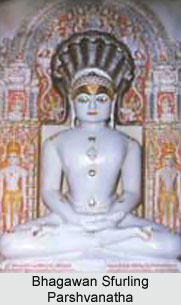 Shri Vijapur Teerth located in Gujarat is a Jain pilgrimage centre. The teerth kshetra is situated on the outskirts of the village Vijapur on the Ahmedabad-Himmatnagar highway and at a distance of 80 kilometers. The temple is dedicated to Lord Parshvanatha, the twenty-fourth Jain Tirthankara.
Shri Vijapur Teerth located in Gujarat is a Jain pilgrimage centre. The teerth kshetra is situated on the outskirts of the village Vijapur on the Ahmedabad-Himmatnagar highway and at a distance of 80 kilometers. The temple is dedicated to Lord Parshvanatha, the twenty-fourth Jain Tirthankara.
History of Shri Vijapur Teerth
According to history Shri Vijapur Teerth dates back to the ancient times. Centuries ago the beautiful idol of Bhagwan Sfurling Parshvanatha was installed in a temple in Nepal. However, with time the temple lost its existence and only its name was remembered. Later one day His Holiness Acharya Subodhsagarsurisvarji during meditation got an instruction from the Lord to set up a teerth kshetra Bhagawan Sfurling Parshvanatha. Thus this splendid temple was constructed. This teerth was installed in memory Buddhisagarsurishvarji. On Friday on the third day of dark half the month of Vaishakh in the year 2037 of the Vikram Samvat Era The great festival of installation of the idol of Bhagwan Sfurling Parshvanatha in this temple was celebrated in the presence of millions of Jains. Vijapur teerth kshetra is also the place of birth, activities and death of Acharya Sri Buddhisagarsurisvarji. The idol of Lord Parshvanatha is believed to possess miraculous powers. Devotees from far off places visit the temple to offer their prayers. It is believed that if prayed with all devotion the Lord fulfils the wishes of the pilgrims.
Temple of Shri Vijapur Teerth
The temple of Shri Vijapur Teerth houses the idol of Bhagwan Sfurling Parshvanatha. This three-storied temple has been magnificently decorated with intricate artistic designs. The walls of the temple have been beautifully designed with ancient paintings. The temple is spread over a huge area. The artistic carvings on wood enhance the beauty of the temple and fascinated the pilgrims. Other than these many one can also see the marvellous work on stones. All these creative temple work boast about the skills of the craftsmen. The idol of the Lord is 126 cm in height and is white in colour. It is seated in a padmasana posture. The idol has been beautifully carved from a single stone and looks very appealing. The smiling face of the Lord looks very calm and serene. The idol of the Lord is flaunted by the idol of Bhagawan Visahar Parshvanatha towards its right and by the idol of Mantradhiraj Bhagawan Parshvanatha to its left. Apart from this there are ten other temples located here. Among them the temple of Bhagwan Chintamana Parshvanatha is very ancient and holds a lot of significance. It was later repaired and renovated by Vastupal Tejpal. These attractive temples adorn the teerth kshetra. There are also temple dedicated to Padmavati Devi, Goddess Saraswati, Goddess Ambika, Goddess Chakheshvari, Goddess Mahalaxmi and the guardian god Ghantakarna Mahavir. The Samadhi temple of His Holiness Acharya Buddhisagarsurisvarji can also be seen here.
The Temple of Shri Vijapur Teerth organises many annual gatherings and functions. There are provisions for dharamshalas or rest houses for the pilgrims. These are well equipped with all modern facilities. Apart from this there are Upashrays, an Ayambilshala and a Jnanabhandar. The temple being located in a village is enclosed by scenic beauty that enthrals and fascinates the pilgrims. The calm and tranquil environment and the surrounding greenery make it a suitable place for religious activities. A beautiful garden is located in the vicinity of the Temple. The kshetra is well connected to road, rail and air. Taxi services and bus services are easily available here. The nearest bus stop is located at Vijapur. The nearest railway station is located at Mehsana. The closest airport is located at Ahmedabad. This sacred place is located 8 km from the chief city of Mahudi and 7 kms from Aaglod.




















